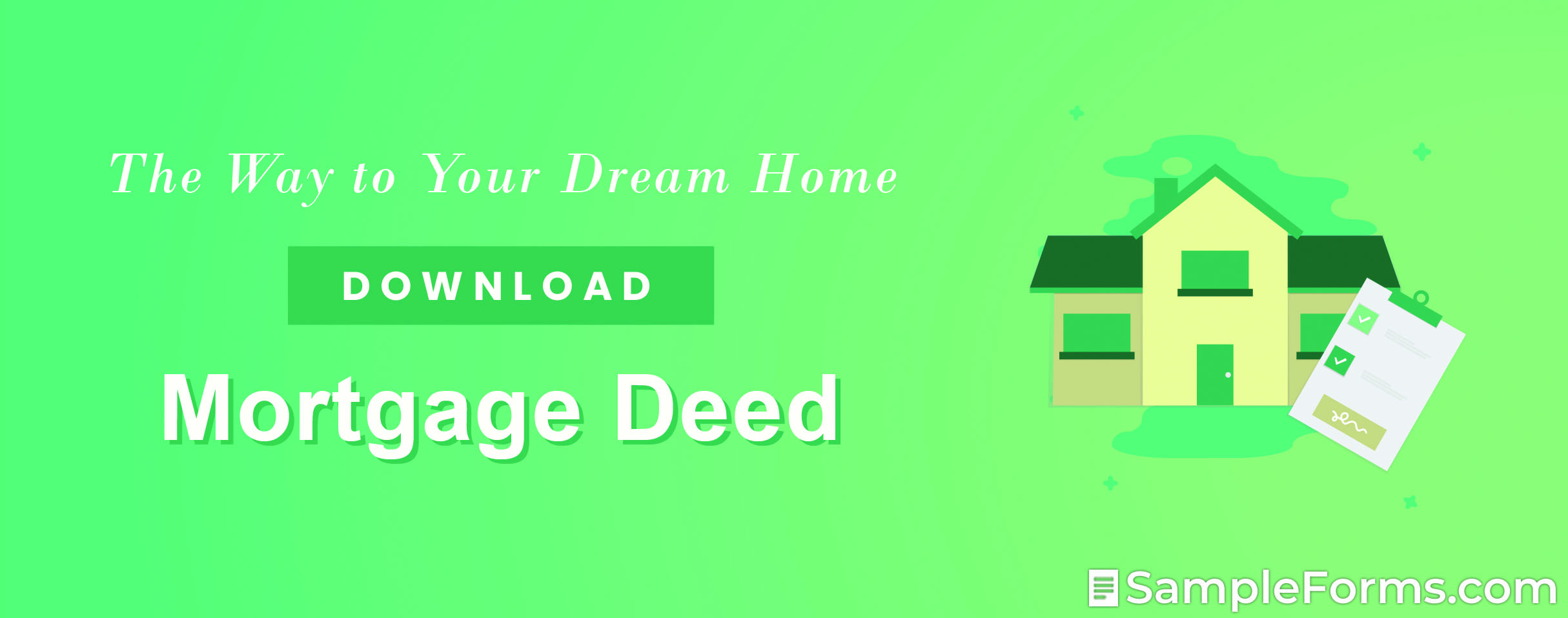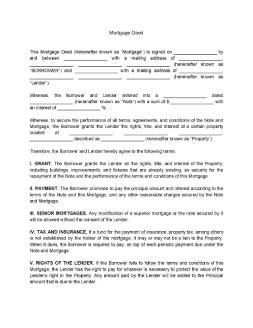- Eviction Notice Forms
- Power of Attorney Forms Forms
- Bill of Sale (Purchase Agreement) Forms
- Lease Agreement Forms
- Rental Application Forms
- Living Will Forms Forms
- Recommendation Letters Forms
- Resignation Letters Forms
- Release of Liability Agreement Forms
- Promissory Note Forms
- LLC Operating Agreement Forms
- Deed of Sale Forms
- Consent Form Forms
- Support Affidavit Forms
- Paternity Affidavit Forms
- Marital Affidavit Forms
- Financial Affidavit Forms
- Residential Affidavit Forms
- Affidavit of Identity Forms
- Affidavit of Title Forms
- Employment Affidavit Forms
- Affidavit of Loss Forms
- Gift Affidavit Forms
- Small Estate Affidavit Forms
- Service Affidavit Forms
- Heirship Affidavit Forms
- Survivorship Affidavit Forms
- Desistance Affidavit Forms
- Discrepancy Affidavit Forms
- Guardianship Affidavit Forms
- Undertaking Affidavit Forms
- General Affidavit Forms
- Affidavit of Death Forms
Mortgage Deed
In an analysis reported by Bloomberg, the median price of American households has rocketed to at least 60% over the last decade. This steep increase in home prices makes it more difficult for average-earning individuals to buy a house with an upfront payment. As a result, more people are applying for mortgages to secure the house that they want to live in for the foreseeable future. At the same time, buyers need to be more knowledgable about mortgage deeds to have a better grasp of the deal that they are getting into. If you want to know more about the terms of these deals, continue reading this article. Read More
What Is a Mortgage Deed?
The availability of the mortgage option makes homeownership affordable. With this option, individuals can pay the full amount of the property over a span of time by paying a more affordable fee per month. In turn, the borrower must subject a piece of their property as the collateral of the arrangement. A mortgage deed contains the necessary terms and conditions that regulate the arrangement, including the specifications of the property or collateral and the responsibilities of both parties towards it. Most importantly, the deed emphasizes the protection of the property so that its value will not decrease until both parties are bound by the mortgage.
How Do You Create a Mortgage Deed?
For the lender, a mortgage deed provides a security net because they can own the collateral if the borrower defaults the contract. On the other hand, the terms of the deed are also beneficial for the borrower because it encourages them to pay on time because if not, they will lose their property and may pay hefty penalty amounts. These are just some of the reasons why both parties must take time in creating a complete and comprehensive mortgage deed. If you are looking into creating one, here are some steps and tips.
1. Specify the Parties and the Property
The defining element of a mortgage deed is the presence of the collateral. Expectedly, this document must contain a specific description of the property. Aside from its address, a mortgage deed also requires a legal description of the property. The introductory part of the document must also introduce the parties that are involved in the arrangement. Fundamental details, such as names and mailing addresses, are also required.
2. Identify the Payment Arrangement
After laying out the details of the parties and the property, the mortgage deed also introduces the loan agreement that the parties agreed to. The essential details such as the principal amount and interest amount are needed. Moreover, the effective date of the prior loan is also required. These details are necessary for calculating the monthly dues of the borrower which is derived from the principal and interest. Moreover, regulations regarding the property’s upkeep and insurance may add to the payable amount so both parties must be aware of it.
3. Include Stipulations Protecting the Property
As mentioned, several stipulations in a mortgage deed ensure the maintenance of the property to avoid its decrease of value. The nature of these conditions is expected because the value of the collateral property must be in the same range as the loaned amount. Protective stipulations include insurance for the property that protects it from natural disasters and other fortuitous events. It also emphasizes prompt action from either party when there are damages to the property.
4. Emphasize the Responsibilities of Both Parties
A mortgage deed also has several terms specifying the responsibilities of both parties. It states the additional fees that the borrower will pay when the need arises. On the other hand, it also emphasizes the role of the lender when the borrower is not capable of handling repairs. Also, the responsibility of the lender as the temporary custodian of the property is also stated. A mortgage deed also states the duties of both parties when the borrower pays of the debt completely.
5. Indicate the Consequences of a Default
Breaching a contract has its consequences. When it comes to mortgage deeds, the participating parties must be equally aware of the repercussions of violating the terms of the contract. The default of payment can lead to an acceleration of its payment. The borrower must also be well-informed of what will happen to their property serving as the collateral once they violate the terms of the agreement. The consequences of other violations should also be in the document.
Frequently Asked Questions
What are the components of a mortgage?
A mortgage has four fundamental components. These are the principal, interest, taxes, and insurance. The principal amount is the original payable amount and the interest is the cost of borrowing the amount. Taxes and insurance also come with a price. When the value of these components is combined, it becomes the total payable amount.
What are the different types of mortgage loans?
Currently, there are five standard mortgage loans. These are the following: interest-only mortgages, reverse mortgages, government-insured mortgages, fixed-rate mortgages, and adjustable-rate mortgages.
Who are the usual users of mortgage deeds?
The usual users of mortgage deeds are individuals or business entities that need to invest in real estate properties without paying a large sum of money upfront.
Is applying for a mortgage better than applying for a loan?
Applying for a loan is better and more secured for both the borrower and lender because of the presence of collateral or security. In this sense, the borrower will lose ownership of the collateral if they default. On the other hand, loans are unsecured and not encouraged for real estate investment. Rather, loans are better options for funding renovation projects of the property.
Can I pay off my mortgage earlier than planned?
Yes, you can pay off your entire debt earlier than what was agreed in the deed. Paying it off earlier can actually save you a sum from paying the interest. However, you need to be careful because you might end up paying for penalties.
Applying for a mortgage is a real estate investor’s leap of faith considering the length of each mortgage agreement. This is one of the reasons why a mortgage deed needs to be well-written and comprehensive. A mortgage deed must make the terms and conditions of the entire arrangement between the two parties and not blur the lines. If you want to make sure that your mortgage arrangement will go smoothly, you can use our readily available deed document.

